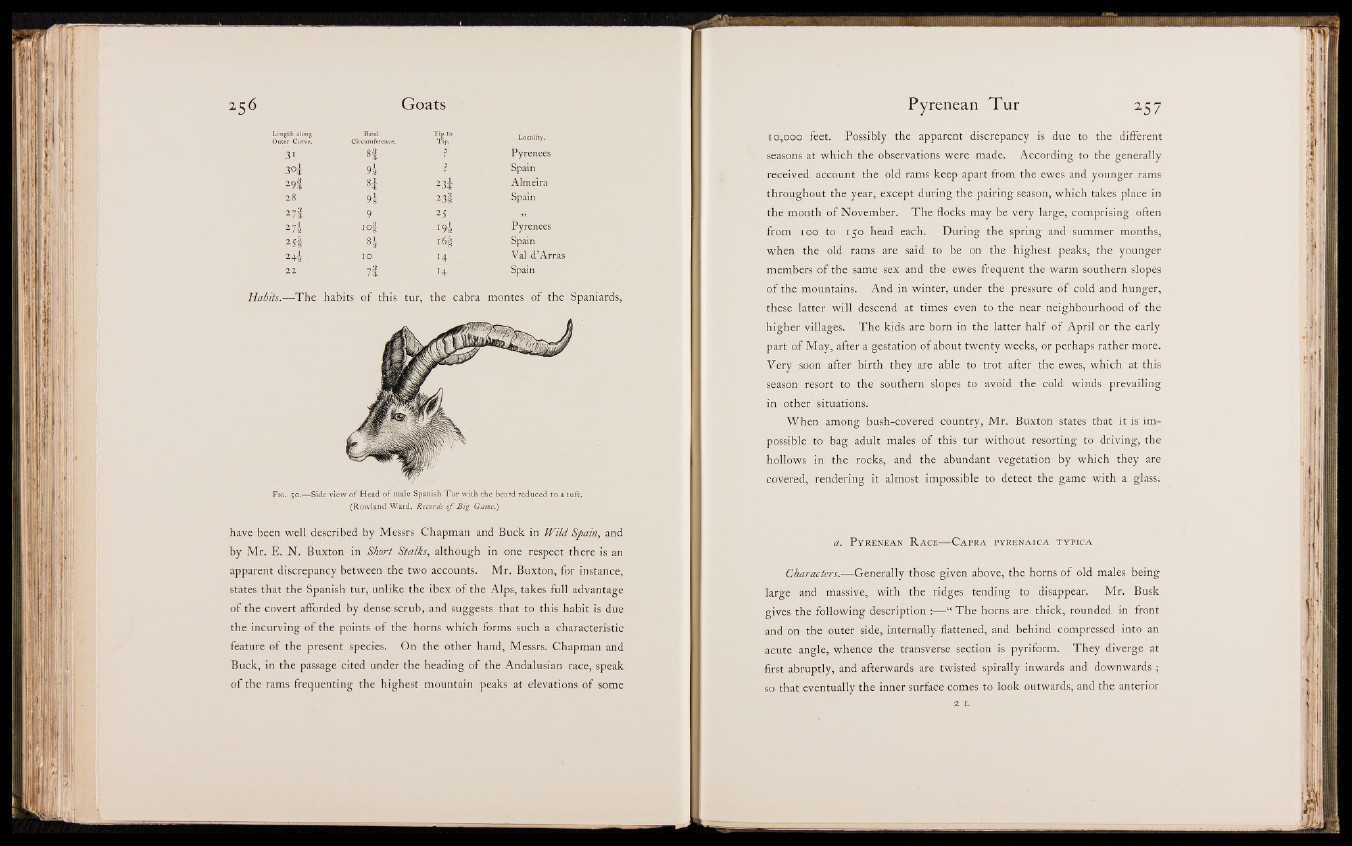
LOeuntgert hC aulrovneg. CircuBmasfaelrence. Locality. ,
31 H Pyrenees
3°è 9 i ' ? Spain
29 § ■ 23 i Almeira
28 9 i 23§ Spain
27§ 9 , 25 »
27 i IO#- i& i Pyrenees
2 5l 4 i6| Spain
24 i n <4 Val d’Arras
22 nB. r 4 Spain
Habits.—The habits of this tur, the cabra montes of the Spaniards,
F ig. 50.—Side view of Head of male Spanish Tur with the beard reduced to a tuft.
(Rowland Ward, Records'of Big Game.)
have been well described by Messrs Chapman and Buck in Wild-Spain, and
by Mr. E. N. Buxton in Short Stalks, although in one respect thereB an
apparent discrepancy between the two accounts. Mr. Buxton, for instance,
states that the Spanish tur, unlike the ibex of the Alps, takes full advantage
of the covert afforded by dense scrub, and suggests that to this habit is due
the incurving of the points of the horns which formffjfuch a characteristic
feature of the present species. On the other hand, Messrs. Chapman and
Buck, in the passage cited under the heading of the Andalusian race, speak
of the rams frequenting the highest mountain peaks at elevations of some
10,000 feet. Possibly the apparent discrepancy is due to the different
seasons at which the observations were made. According to the generally
received account the old rams keep apart from the ewes and younger rams
throughout the year, except during the pairing season, which takes place in
the month of November. The flocks may be very large, comprising often
from too to 150 head each. During the spring and summer months,
when the old rams are said tS?;be on the highest peaks, the younger
membeifjipf the same sex and the ewes frequent the warm southern slopes
of the mountains. And in winter, under the pressure of cold and hunger,
these latter will descend at times even to the near neighbourhood of the
higher villages. The kids are born in the latter half of April or the early
part of May, after a gestation of about twenty weeks, or perhaps rather more.
Very soon after birth they are able to trot after the ewes, which at this
season resort to the southern slopes to avoid the cold winds prevailing
in other situations.
When among bush-covered country, Mr. Buxton states that it is impossible
tiii-bag adult maleapf this tur without resorting to driving, the
hollows'ftln the rocks, and the abundant vegetation by which they are
Covered, rendering it almost impossible ^Bdetect the game with a glass.
a. P y r e n e a n R a c e— C a p r a p y r e n a ic a t y p i c a
Characters.—Generally those given above, the horns of old males being
large and massive, with the ridges tending to disappear. Mr. Busk
gives the following description :-3 “ The horns are thick, rounded in front
and on the outer side, internally flattened, and behind compressed into an
acute angle, whence the transverse section is pyriform. They diverge at
first abruptly, and afterwards are twisted spirally inwards and downwards ;
so that eventually the inner surface comes to look outwards, and the anterior
2 L